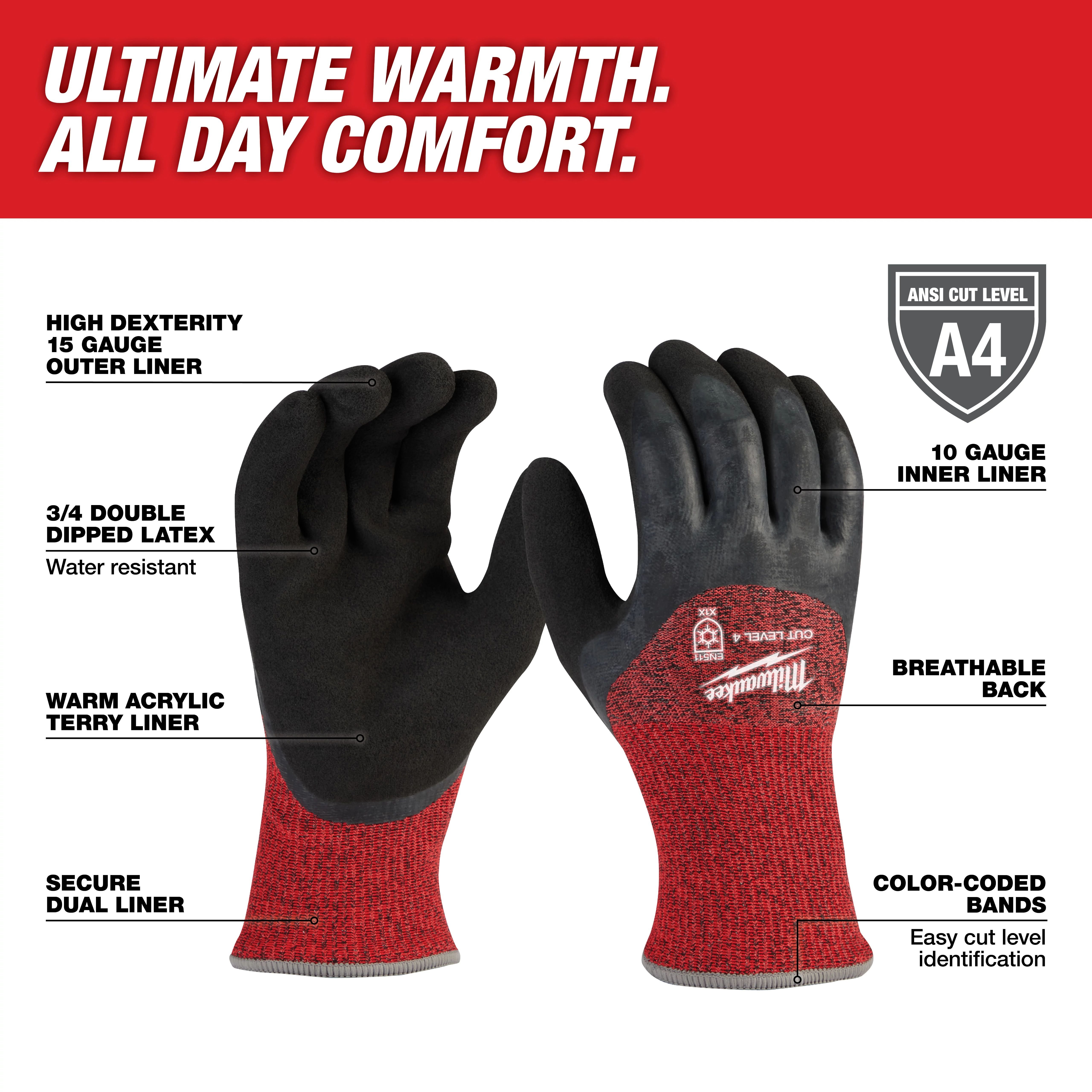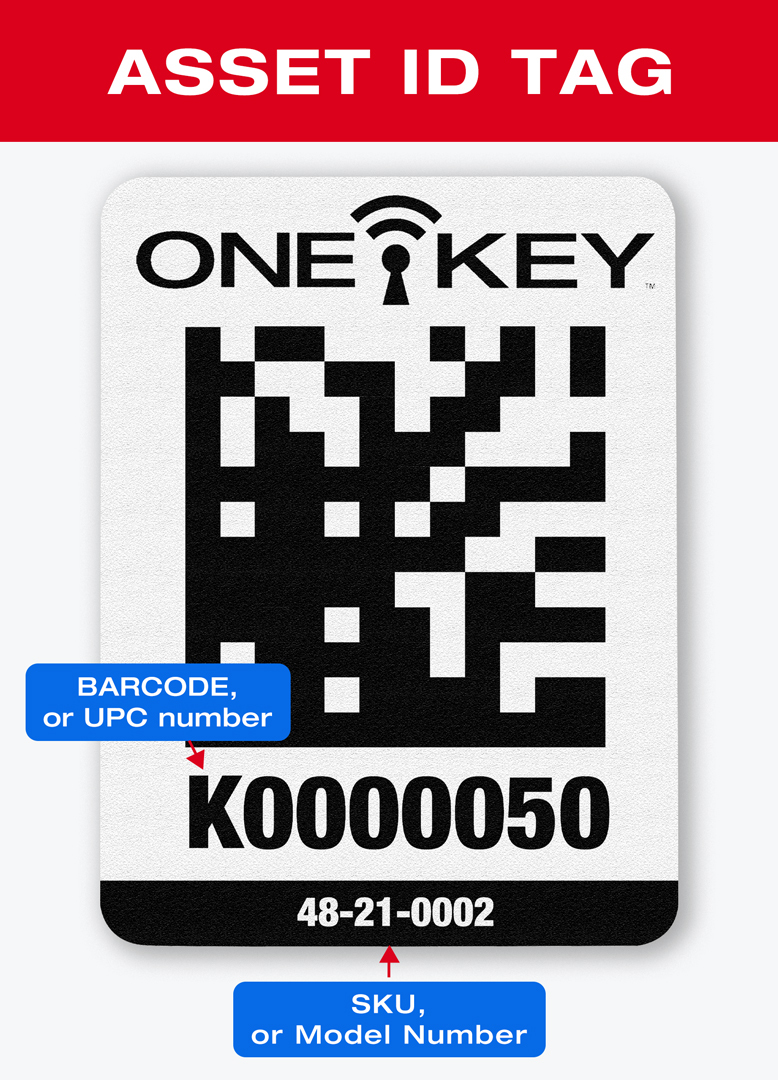
SKUs are an often-overlooked digital tool that can help contractors and construction companies streamline their inventory and supply chain management processes.
If you’ve encountered the term “SKU” before, it was probably in the context of retail sales. But what exactly are SKUs, and how can you as a construction professional use them to keep track of your mission-critical assets, materials, and supplies?
Key Takeaways:
- SKUs are alphanumeric codes that help track and organize inventories.
- In construction, SKUs are most often used by inventory managers to track small items and consumable materials.
- SKUs are best used in combination with Enterprise Resource Planning (ERP) software and scannable codes like the ONE-KEY™ Asset ID Tag.
Jump Ahead:
What is a SKU?
A SKU (short for “Stock Keeping Unit”) is a unique string of letters and numbers that businesses use to internally identify, track, and organize sets of items in their inventories.
Think of the Dewey Decimal System for organizing books by subject in a library. The SKU system is kind of like that, but instead of books, it’s used by businesses to classify physical objects of the same type in an inventory.
Businesses create their own SKUs, which can then be logged and tracked in Enterprise Resource Planning (ERP) platforms like Oracle. A SKU usually appears as a printed alphanumeric code—typically between eight and 12 characters in length—that is scannable by machines and readable by humans. Each SKU contains valuable information about the item it's attached to, including what type of item it is and where it fits in your inventory.
In addition to an alphanumeric code, SKUs often also appear in the form of scannable barcodes, QR codes, or 2D matrices. This can lead to confusion between SKUs and other types of unique identifiers attached to products and inventory items.
What a SKU is not
- A SKU is not a serial number: Serial numbers identify specific individual items, whereas SKUs identify sets of items of the same type and sub-type. For example, each cordless M18 FUEL™ SAWZALL® with One-Key has the same model number while also having its own unique serial number (read on to learn how model numbers and SKUs sometimes overlap).
- A SKU is not a Universal Product Code: Universal Product Codes, or “UPCs”, are also used to track specific types of items. For this reason, the two are often confused with one another. Like SKUs, UPCs appear in the form of barcodes and QR codes. An item’s UPC, however, remains consistent across distributors, whereas a SKU is an internal identifier that typically changes from one business to the next.
- A SKU is not (necessarily) a model or product number: Model or product numbers are unique identifiers of an item that are assigned by that item’s manufacturer. SKUs on the other hand are assigned to an item by businesses to meet their own in-house inventory management needs.
All that said, there can sometimes be overlap between SKUs and model numbers, as some businesses refer to a product’s model number instead of a SKU, or will embed a product’s model number within their own home-brewed SKUs. Milwaukee®, for instance, uses model numbers, and many vendors refer to this number when tracking the “SKU” for a Milwaukee product.
For an easy-to-understand example of how SKUs and model numbers are sometimes used interchangeably to track items within a point of sale system, check out the “Quick Add” function on Home Depot’s website.
Why Use SKUs?
The purpose of SKUs is to streamline internal inventory and supply chain management processes.
By communicating what an item is with sparseness and precision to both people and digital scanners, SKUs make it easier and more efficient for businesses of all types to rapidly track, organize, and restock their inventories.
In retail settings, SKUs are mostly used on the front-end to track the locations, stock levels, and sales of products. In construction, SKUs are mostly used on the back-end to organize and track stocks of essential materials, supplies, and other small items that are ordered in bulk, like boxcutter blades, nails, screws, and so on.
Who uses SKUs?
SKUs can be a valuable organizational tool for a variety of users.
- Inventory Managers: Whether in a tool crib, warehouse, or big box store, SKUs provide inventory managers a standardized shorthand that efficiently communicates a wide range of information to both people and computers about what items are in stock, where they are, and when to place orders to replenish them.
- Retail Employees: Instead of searching aimlessly for a desired item using vague keyword descriptors, retail employees can use SKUs to pull up the precise product that a customer is looking for.
- Customers: If you’re a discerning customer, knowing the SKU of a desired product will cut through the confusion and ensure that you always get exactly what you’re looking for.
How SKUs Are Used in Construction: A Case Study
TDIndustries is an excellent case study in how construction companies can use SKUs to optimize their inventories and supply chains.
Based in Dallas, Texas, TDIndustries is a premier mechanical construction and facilities management company that uses One-Key to track and manage its inventory of power tools.
Smaller items, however, have been more difficult to keep track of.
Blades, drill bits, extension cords, gloves, safety vests—these are just a few examples of what TDIndustries’ Senior Asset Manager Nate Sexton refers to as “consumables.” These are expendable supplies and materials, often purchased in bulk, that are essential to the job of construction but are generally too small and numerous for individual Bluetooth tracking and have limited life spans compared to long-term, big-ticket assets like power tools and heavy equipment.
Historically, tracking and managing consumables at TDIndustries has been a time-consuming and tedious process. Here’s Sexton:
“If someone comes in and says, ‘I need a dozen pair of [safety] glasses,’ it gets written on a piece of paper, that piece of paper gets sent to me. Essentially, the request has to manually be entered into our accounting software.”
Looking to streamline this process, Sexton and his team have created an internal computer program that uses SKUs to digitally track all of the company’s consumables. With this single-point system, they’re able to build and manage what amounts to an in-house hardware store for TDIndustries, what Sexton refers to as a “holding area for smart buying.” Consumables and other small items are purchased in bulk when the price is most advantageous, then neatly arranged in bins on shelves in a warehouse environment, with each bin clearly displaying the item’s name, SKU, and scannable code.
5 Benefits of SKUs in Construction
Using SKUs to track its inventory of consumables gives TDIndustries a number of distinct advantages.
Precision & Accuracy
Construction work often requires many variations of the same item. For example, a nail isn’t just a “nail.” There are drywall nails, roofing nails, framing nails, and many more, each variety coming in its own distinct size, shape, and material composition. Using the wrong items in the wrong situation can have negative consequences for both project and personnel, so you want to avoid mix-ups as much as possible.
SKUs offer a succinct and standardized way to identify each specific item by type and sub-category with precision and accuracy. This not only helps keep your inventory and supply chain organized in both physical and digital space, it also ensures that the right supplies and materials are always correctly ordered from the distributor and deployed exactly where and when they’re needed.
Save Money
In addition to making inventory management more accurate and precise, SKUS can help construction companies save money. Under its new system, TDIndustries can track a shortlist of SKUs to monitor fluctuations in the prices of consumables. This allows the company to place bulk orders for essential supplies when they are cheapest.
“It enables us to look for promotions and deals and capitalize on our purchasing techniques as opposed to last minute, ‘Oh, let me go buy this from a big box store,’” Sexton said.
Increase Safety
Mixing up personal protective equipment (PPE) can have negative safety consequences for construction workers. By organizing your PPE inventory with distinct SKUs per item, you can avoid confusion and ensure that the correctly-rated gear is always on-hand.
“Some people may say ‘I just want a pair of gloves,’” Sexton said. “That may work if a glove was a glove, but you’ve got cut level two, three, four, abrasion resistance, and so on. So, having the specifics can help keep one of TDIndustries’ Core Values, Fiercely Protect the Safety of All Partners, in order.”

Build Safety Stock
The precision of SKUs as an inventory tracking tool also makes it easier for construction companies to build and keep track of safety stocks. Perhaps none of your projects require a surplus of Cut Level 4 gloves right now, but by tracking the SKU (or model number) for those gloves and purchasing them in bulk during a sale or promotion, inventory managers can ensure that a built-in safety stock is on-hand in the event of a new project or sudden snags in the supply chain.
Automation
When coupled with scannable codes, SKUs make it easy to automatically log and track stock levels of supplies and materials.
Here’s Virtual Design and Construction Project Manager Jeff Ebner, who built the internal consumables tracking system for TDIndustries:
“On the computer side, the SKU is an ID for a particular item. This ID prevents items from being mixed up within the system,” Ebner said. “If someone puts an order in for two 50-foot water hoses, you can just scan the SKU on the shelf and show that you filled [the order] for two 50-foot water hoses, by scanning the code.”
Using SKUs in Combination with ONE-KEY™ Asset ID Tags
To take full advantage of the SKUs in your repertoire, you’re going to want to sync them with a scannable code that “talks” to your digital inventory management system of choice.
Traditionally, scannable SKUs in retail and warehouse settings have come in the form of barcodes and QR codes. However, One-Key Asset ID tags offer an alternative that has been tailor-made with the unique inventory tracking needs of construction professionals in mind.

One-Key Asset ID Tags are durable codes that can be attached to your tools, equipment, and storage bins where consumables or other smaller items are stored. They’re designed to fill the gap between the built-in tracking capabilities of the One-Key product line and other advanced tracking technologies like the ONE-KEY™ Bluetooth® Tracking Tag.
With large and small models made out of either plastic or metal, the prominent feature of the One-Key Asset ID Tag is a 2D code on the front that can be scanned with the One-Key app using your phone’s camera. Each scan automatically updates the tag’s physical location within the One-Key app.
Ideal for items both big and small, One-Key Asset ID Tags have some simple design enhancements that help it perform better than traditional barcodes in construction settings:
- 2D Matrix Code: Scans more easily and accurately than a traditional barcode.
- Heavy-duty adhesive: A One-Key Asset ID Tag won’t peel as easily as a traditional barcode.
- Heavy-duty materials: Designed with wear-and-tear in mind, One-Key Asset ID tags will withstand harsh jobsite environments.
- Location Data: Unlike a traditional barcode, One-Key Asset ID tags can provide you with real-time GPS coordinates for the item being scanned.
Another advantage of One-Key Asset ID Tags: You don’t need an expensive barcode reader (that you’re only going to lose anyway) to scan them. Simply pull up the free One-Key app on your smartphone and scan the One-Key Asset ID Tag with your camera.
To track smaller SKUs like consumables, just stick a One-Key Asset ID Tag on the bin where that item is stored and let the One-Key app do the rest.
Bottom Line
When used in combination with scannable codes, SKUs can be an essential tool for tracking and managing inventories. In construction, knowing the SKUs and/or model numbers of your tools, materials, and supplies can also help you make smart purchasing choices that bolster the safety and accuracy of your day-to-day operations.